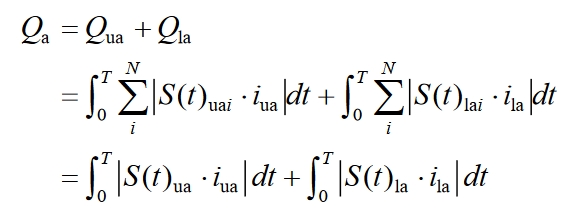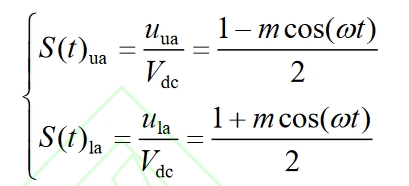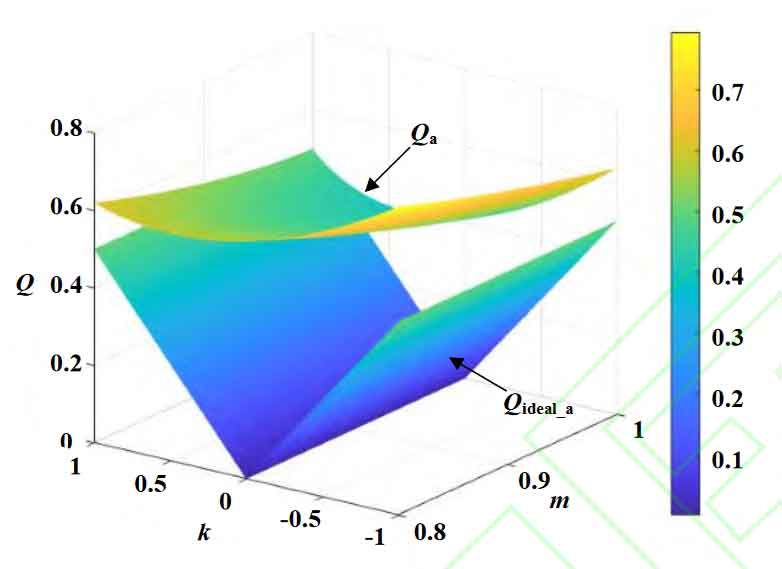Introduced the definition of charge throughput, analyzed the mechanism and influencing factors of modular multilevel converter-battery energy storage system charge throughput in medium voltage DC distribution networks.
1. Definition of Charge Throughput
In an ideal situation, the battery current is mainly direct current, and the direction of the current remains unchanged for a period of time. However, in the medium voltage DC distribution network, the AC and DC sides of modular multilevel converter-battery energy storage system are respectively connected to the medium voltage AC grid and the medium voltage DC bus. During operation, the battery current connected to the DC side of the submodule has AC components such as fundamental frequency and second harmonic. When charging a battery, when the instantaneous value of the AC component of the battery current and the sum of the DC component are less than 0, the battery current reverses and its working mode changes from charging state to discharging state. The battery in modular multilevel converter-battery energy storage system repeatedly charges and discharges during the cycle, resulting in additional charge throughput.
For the sake of analysis, the actual charge throughput Q of modular multilevel converter-battery energy storage system is defined as the integral of the absolute value of battery current, which represents the total amount of actual charge flowing through the battery. Its expression within one cycle is:

In the formula, ibat is the instantaneous value of battery current; T is the power frequency cycle of the AC power grid.
The ideal charge throughput is defined as the charge throughput of a battery under ideal conditions (i.e. when the battery current does not reverse), specifically expressed as:

The additional charge throughput Qadd is defined as the difference between the actual charge throughput Q and the ideal charge throughput Qadal, which can be expressed as:

2. Mechanism of modular multilevel converter-battery energy storage system charge throughput generation
For the sake of analysis, this article considers the DC side energy storage unit of the half bridge submodule as a whole. According to the working status of the half bridge submodule, the battery current connected to it can be represented as:

In the formula, x={u, l}; I={1, 2,…, N}; S (t) xi is the modulation signal of the i-th submodule of the upper or lower bridge arm.
Taking phase A as an example, establish the expression for the sum of battery charge throughput of each submodule of the upper and lower bridge arms based on the formula as follows:

In the formula, S (t) uai and S (t) lai are the modulation reference values of the i-th submodule of the upper and lower bridge arms, respectively; S (t) ua and S (t) la are the voltage modulation reference values for the upper and lower bridge arms, respectively, which can be obtained by calculating the bridge arm voltage. Specifically, they can be expressed as:

Similarly, the expression for the ideal charge throughput of each submodule battery in the upper and lower bridge arms can be obtained as follows:

To achieve bidirectional power flow on the AC and DC sides of modular multilevel converter-battery energy storage system, it needs to work under rectifier or inverter conditions. The two operating conditions only change the symbol of the bridge arm current and do not affect the numerical value of the charge throughput. Therefore, this article takes the operation of modular multilevel converter-battery energy storage system under inverter conditions (Pac greater than 0) as an example to analyze the mechanism, influencing factors, and suppression strategies of charge throughput of modular multilevel converter-battery energy storage system under different operating conditions.
According to the formula, the charge throughput of modular multilevel converter-battery energy storage system under both battery discharge and charging conditions can be obtained as shown in Figure 1. The shaded area in the figure indicates that the zero crossing of the bridge arm current causes the battery current to flow in the opposite direction, causing the battery to repeatedly charge and discharge within a cycle, resulting in additional charge throughput.

The following text will analyze the charge throughput Qa and ideal charge throughput Qaideal of modular multilevel converter-battery energy storage system under different energy storage power ratios k and modulation ratios m_ The relationship between a.

Under the inverter operating condition, the AC side power Pac of modular multilevel converter-battery energy storage system is set as a constant value. According to the formula, the charge throughput Qa and ideal charge throughput Qa of modular multilevel converter-battery energy storage system can be obtained for different energy storage power ratios k and modulation ratios m_ As shown in Figure 2. In the figure, Qa represents the charge throughput without additional suppression. At this point, modular multilevel converter-battery energy storage system adopts traditional circulating current suppression control (CCSC). As shown in Figure 2, when the modular multilevel converter-battery energy storage system is in the inverter condition and the battery power is equal, the charge throughput of modular multilevel converter-battery energy storage system is different under the energy storage power ratio k<0 and k>0 conditions. When k<0, the charge throughput of modular multilevel converter-battery energy storage system is larger; When the proportion of energy storage power k is the same, as the modulation ratio m increases, the charge throughput gradually decreases; When m and k both approach 1, the actual charge throughput tends to be consistent with the ideal battery charge throughput; In most operating conditions, the charge throughput of modular multilevel converter-battery energy storage system is greater than its ideal charge throughput, and there is a significant margin for suppression.
2. Factors affecting the charge throughput of modular multilevel converter-battery energy storage system
According to the expression of modular multilevel converter-battery energy storage system charge throughput given by the formula and the mechanism analysis of charge throughput in modular multilevel converter-battery energy storage system in Figure 1, it can be concluded that the influencing factors of charge throughput in modular multilevel converter-battery energy storage system include DC bus voltage Vdc, modulation ratio m, energy storage power ratio k, and circulating current. Considering the scenario of medium voltage DC distribution network, the DC bus voltage Vdc is usually a constant value, and the energy storage power ratio k and modulation ratio m are determined by the operating conditions and parameters of the system. Therefore, it is necessary to study the suppression strategy of modular multilevel converter-battery energy storage system charge throughput under different energy storage power ratios k and modulation ratio m.
